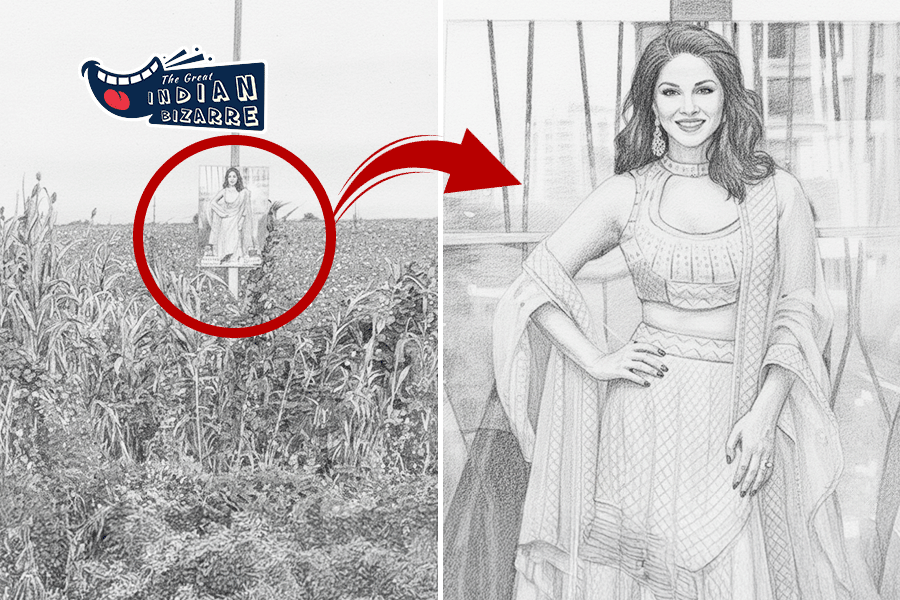 Monday, 08 December 2025
Monday, 08 December 2025
 Monday, 08 December 2025
Monday, 08 December 2025
One question — “Kattappa ne Baahubali ko kyu maara?” — broke the north-south barrier in Indian cinema 10 years ago, with S.S. Rajamouli’s Baahubali: The Beginning storming into theatres, smashing box-office records and creating a pan-India fanbase for period action entertainers produced down south.
On July 15, 2015, Prabhas attained the superstar status across India with his portrayal of Baahubali in the film, and never looked back. On the 10th anniversary of the film that redefined modern-day Indian cinema, we take a look at six reasons that made Baahubali: The Beginning a pop culture phenomenon.
‘Kattappa ne Baahubali ko kyun maara?’
In the final moments of Baahubali: The Beginning, viewers were taken by surprise as Kattappa, the loyal warrior of Mahishmati, was shown killing Baahubali. Rarely has a film ended with a cliffhanger that sparked such collective frenzy. It became the most hotly debated question in India, fuelling endless memes, dinner-table debates, and fan theories. People lined up outside theatres two years later in droves to watch Baahubali: The Conclusion, only to find the answer to the burning question — why did Kattappa kill Baahubali?
A visual spectacle like no other
From Mughal-E-Azam to Devdas and Jodhaa Akbar, Indian cinema has flirted with grand period dramas before Baahubali. But, Rajamouli’s vision took it to an entirely different level. From cascading waterfalls to the majestic kingdom of Mahishmati, the production design was designed to dazzle the viewers. The film’s action set pieces, particularly the climactic war sequence, were mounted on a huge scale, with the stunts defying the logic of physics but wooing the audience. The special effects, too, brought to life a fantasy world that felt rooted in Indian mythological tales.
Prabhas’s on-screen charm and towering presence
If S.S. Rajamouli’s vision was one of the pillars of the film’s success, the craze for Baahubali was also because of the charisma of Prabhas, whose double roles as Shiva and Amarendra Baahubali won hearts. His commanding screen presence and physical transformation for the role were praiseworthy. Whether swinging from trees, lifting a Shiva linga or leading an army into battle, Prabhas owned every scene he was a part of.
Scene-stealing supporting characters
While Prabhas led from the front, Baahubali was equally defined by its ensemble cast. Sathyaraj as Kattappa easily became a fan favourite. Rana Daggubati made for a magnetic antagonist as Bhallaladeva. Ramya Krishnan, as the iron-willed Sivagami, was commanding in every frame she appeared in. Even smaller roles, like Nassar’s cunning Bijjaladeva or Tamannaah’s Avanthika, left lasting impressions. Anushka Shetty also left a mark in her cameo as Devasena.
A soundtrack that resonates even today
Composer M.M. Keeravani’s soaring soundtrack played an important role in Baahubali’s success. Songs like Dhivara and Manohari became instant chartbusters, while Kaun Hain Woh gave audiences goosebumps with its haunting melody. The background score elevated important scenes, from Shivudu’s ascent up the waterfall to the film’s climactic war.
A period saga that connected with every viewer
At face value, Baahubali is a simple story of good versus evil, jealousy and power play, sacrifice and destiny. These themes have been explored in films and theatre for ages. The similarity of Baahubali’s plot to William Shakespeare’s Hamlet, or The Lion King, was unmissable. Yet, its emotional undercurrents resonated universally. Rajamouli’s storytelling ensured that viewers connected not just with the spectacle but with the characters and their journeys.







